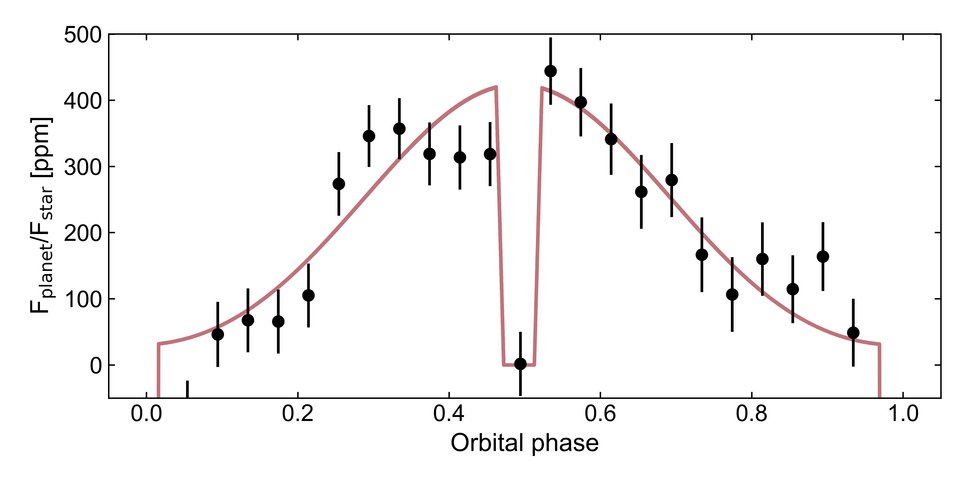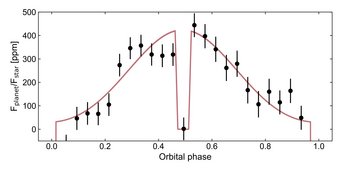Observations of Transiting Planets

Transiting planets are ideal targets for atmosphere characterization. Even though the planets are not spatially resolved from the parent stars, it is possible to study their atmospheres by measuring changes in the total brightness of the system (planet + star) during transits, eclipses, and phase curves. In the APEx department we observe these events to address fundamental questions about the planets’ atmospheric composition and climate. These include:
How much are hot Jupiter atmospheres enhanced in key carbon- and oxygen-bearing molecules? Can we connect the present-day atmospheric composition to the planets’ formation histories?
How does the intense irradiation environment of short-period planets affect their global climate, wind patterns, and vertical temperature structure?
Where is the boundary between rocky and gaseous exoplanets? What is the typical bulk composition for the smallest gaseous planets?
When and where do clouds and hazes form, and what are they made of?
Under what conditions do rocky exoplanets maintain their atmospheres? For rocky planets that have atmospheres, what are their dominant chemical constituents?
APEx researchers frequently use the Hubble and James Webb Space Telescopes for atmosphere characterization. It is usually easier to observe the planets from space, when the Earth’s atmosphere is not in the way. As of 2022, the James Webb Space Telescope (JWST) has been providing revolutionary new observing capabilities, with a large mirror and spectroscopic coverage that extends to the infrared. JWST allows us to characterize smaller and cooler planets, and study the gas giants in greater detail than ever before. In addition to space telescopes, innovations in ground-based observing also results in an increasing number of planets to be studied with complementary, high-resolution spectroscopy.
